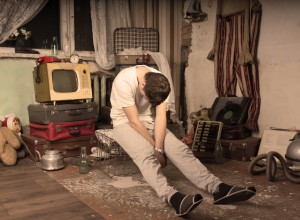
As noted in a previous blog on another paper from this study (Braye, Orr and Preston-Shoot 2015), the Care Act Guidance 2014 recognises self-neglect as a category of abuse and neglect. Section 14/17 declares: ‘Self-neglect – this covers a wide range of behaviour neglecting to care for one’s personal hygiene, health or surroundings and includes behaviour such as hoarding’ (Department of Health, 2014).
This means that people who self-neglect may now be better supported by safeguarding adult approaches, including Making Safeguarding Personal, as well as receiving more consistent attention from social care practitioners and other professionals.

The study looked at serious case reviews (SCRs) for self-neglect to identify good practice indicators.
Methods
In this study the authors explored the findings from 32 serious case reviews (SCRs) where self-neglect was described as one of the behaviours of the adult involved or it featured in the context of the harm or risk of harm that led to a SCR.
Comparing the reports in a ‘cross case analysis’ they developed an index of key themes. These were applied to a fourfold domain matrix, which can be seen as a series of concentric circles surrounding:
- the practitioner and the individual;
- the professional team(s) round them both;
- the organisations surrounding the professional team; and
- the interagency governance surrounding the organisations, in terms of the workings of the Local Safeguarding Adult Board (SAB).
Discussion also makes reference to some recent Coroner judgments and Ombudsman reports.
Like other analyses of SCRs (see Manthorpe and Martineau 2014), the authors tracked down as many published and unpublished summaries or reports as they could using various contacts and searches.
The SCRs obtained ranged in size from 5 pages to 63 pages and covered the period 2003-13. Some were full reports, others only executive summaries, and 4 had not been published.
The number of recommendations similarly varied, from 4-26, with some SCRs’ recommendations containing various sub-elements while other SCRs including an Action Plan instead.

The authors tracked down as many published and unpublished summaries or reports as they could.
Findings
This article makes observations on practice some of which were touched upon in a previous article arising from their reading of the SCRs (Braye, Orr and Preston-Shoot 2015). Those particularly salient to self-neglect policy and practice relate to the new policy acceptance that self-neglect is the proper concern of safeguarding.
This may necessitate more wholesale skills development and practice learning. It may require more detailed examination of apparent refusals of services and rejection of information and advice. It may mean reworking of understandings of presumption of capacity and acceptance of unwise decisions.
The authors highlight that SCRs are not the vehicle to explore underlying feelings, values and beliefs that seem to be so important in practice with people who are at risk of self-neglect or are already self-neglecting. While practitioners have their own feelings and experiences there is also the suggestion that organisational culture plays a part in responses to self-neglect, including their commitment of resources.
However, one important observation from this article is that of conflicting or confounding evidence. There is evidence from many of the SCRs that professionals do not always follow procedures – yet the SCRs often call for further proceduralism – more policy and procedures, more guidance.
Similarly, SCRs may give the impression that professionals should act rationally whereas the nature of their work means that they have many constraints on their choices and are influenced by personal, team and agency cultures. The authors suggest that some SCRs have underplayed the importance of the interplay or interconnections between the different levels of the four domains that they identify as relevant to safeguarding practice.
However, good practice is evident in many of the SCRs – such as
- following procedures correctly,
- good joint working on risk and decision making,
- information sharing and
- raising concerns.
The authors maintain that synchronicity is the key to making sure these are not individually reliant but are built up as part of systems. In such a way supervision and communication between practitioners are mirrored by good multi-agency engagement.
Some helpful pointers of what ‘good’ practice looks like are offered and these might inform development of audit and feedback at local level by the Board or different agencies.

Following procedures correctly and good joint working on risk and decision making were among the good practice indicators.
Conclusion
The authors conclude that
Clear procedures and protocols can facilitate successful work by practitioners; locating self-neglect work within safeguarding policies promotes strong multiagency engagement; effective management oversight helps practitioners to manage the personal experience of this work; and good practice privileges building relationships over time, understanding the whole person, devising flexible interventions, and using multi-agency resources to assess risks and mental capacity.
Summing up
This article confirms that while self-neglect is newly articulated as inherently part of safeguarding practice and systems, SCRs have for many years been a way of establishing where things went wrong in this area of concern.
Interestingly Braye and her colleagues conclude that SCRs are not as strident in their criticisms of practice as Coroners or Ombudsman reports. As noted previously, it may be possible soon to see if the implementation support document being developed by SCIE is helping with difficult decisions about proportionality of investigations and resource commitments facing Safeguarding Adults Boards.
This article adopts a systems approach. This is helpful in thinking about the strengths of current practice which have not always sufficiently been the subject of thought or discussion.

Serious case reviews have for many years been a way of establishing where things went wrong in cases of self-neglect.
Link
Braye, S., Orr, D., and Preston-Shoot, M. (2015) Serious case review findings on the challenges of self-neglect: indicators for good practice, The Journal of Adult Protection 17(2) 75-87. [Abstract]
References
Braye, S., Orr D. and Preston-Shoot, M. (2015) Learning lessons about self-neglect? An analysis of serious case reviews, The Journal of Adult Protection, 17(1) 3-18. [Abstract]
Department of Health (2014) Care and Support Statutory Guidance, London, Department of Health, [Full Text]
Manthorpe J and Martineau S (2014) Serious Case Reviews into Dementia Care: An Analysis of Context and Content, British Journal of Social Work first published online November 21, 2014 doi:10.1093/bjsw/bcu135 [Full Text]

Caution: We must balance MCA & Human Rights: HT SocialCareElf: Self-neglect & safeguarding: indicators for practice http://t.co/cdHLZv2hsB
Today Jill Manthorpe @scwru blogs on self-neglect & what serious case reviews say about good practice #safeguarding http://t.co/3D4nvpJyLz
Self-neglect and safeguarding: indicators for good practice https://t.co/pTq7er0xpZ via @socialcareelf
Unit Director Jill Manthorpe on work by Braye et al examining self-neglect + Serious Case Reviews @SocialCareElf http://t.co/UQQaP663Mp
What do serious case reviews have to say about good practice in cases of self neglect? #safeguarding http://t.co/yJMspl2wMr @scwru
How should social work handle self neglect in cases of adult #safeguarding? Jill Manthorpe @scwru has some clues http://t.co/PxVOkym6Xr
Self-neglect and safeguarding: indicators for good practice https://t.co/uZNxFSWmag via @sharethis
Don’t miss: Self-neglect and safeguarding: indicators for good practice http://t.co/xmAKlx9pEq #safeguarding
Don’t miss: Self-neglect and safeguarding: indicators for good practice http://t.co/aV4h9tVV6B #EBP
Self-Neglect – promoting a safeguarding approach, balanced within MCA and resource pressures? New @SocialCareElf blog: Jill Manthorpe @scwru
[…] and Lindsey Pike. While Lindsey discussed evidence on what works best for adult safeguarding, Jill looked specifically at indicators for good practice in cases of […]